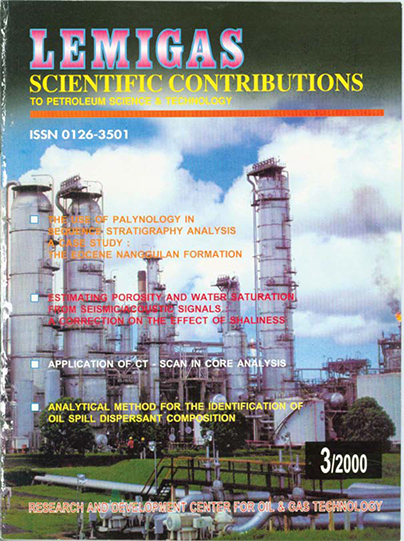ANALYTICAL METHOD FOR THE IDENTIFICATION OF OIL SPILL DISPERSANT COMPOSITION
DOI:
https://doi.org/10.29017/SCOG.23.3.1086Keywords:
Analytical, Identification, Spilled OilsAbstract
Chemical dispersants are often used to disperse spilled oils, which threaten to pollute shoreline areas. In Indonesia all dispersants produced or marketed should undergo the toxicity test with regand to certain types of fish to determine the threshold limit, LC-50. The type of surface-active agent (surfactants) and the solvent used in the dispersants, which determine the dispersing quality, might be toxic to the marine species and bacteria.
References
Anonim, 1980, Perkin-Elmer Library of Infrared Spectra, The Perkin-Elmer Corporation, Norwalk, Connecticut
Anonim, 1989, Using Oil Spill Dispersants on the Sea, (J.N. Butler chairman), National Academy Press, Washington, D.C.
Canevari, G.P., 1969, “General Dispersant Theoryâ€, p.171-177. Proc. APL/FWPCA. Joint Conference on Prevention and Control of Oil Spills, Publ, no. 4040, American Petroleum Institute, Washington, D.C.
Downloads
Issue
Section
License
Copyright (c) 1970 SCIENTIFIC CONTRIBUTIONS OIL AND GAS (SCOG)

This work is licensed under a Creative Commons Attribution 4.0 International License.
Authors are free to Share — copy and redistribute the material in any medium or format for any purpose, even commercially Adapt — remix, transform, and build upon the material for any purpose, even commercially.
The licensor cannot revoke these freedoms as long as you follow the license terms, under the following terms Attribution — You must give appropriate credit , provide a link to the license, and indicate if changes were made . You may do so in any reasonable manner, but not in any way that suggests the licensor endorses you or your use.
No additional restrictions — You may not apply legal terms or technological measures that legally restrict others from doing anything the license permits.














